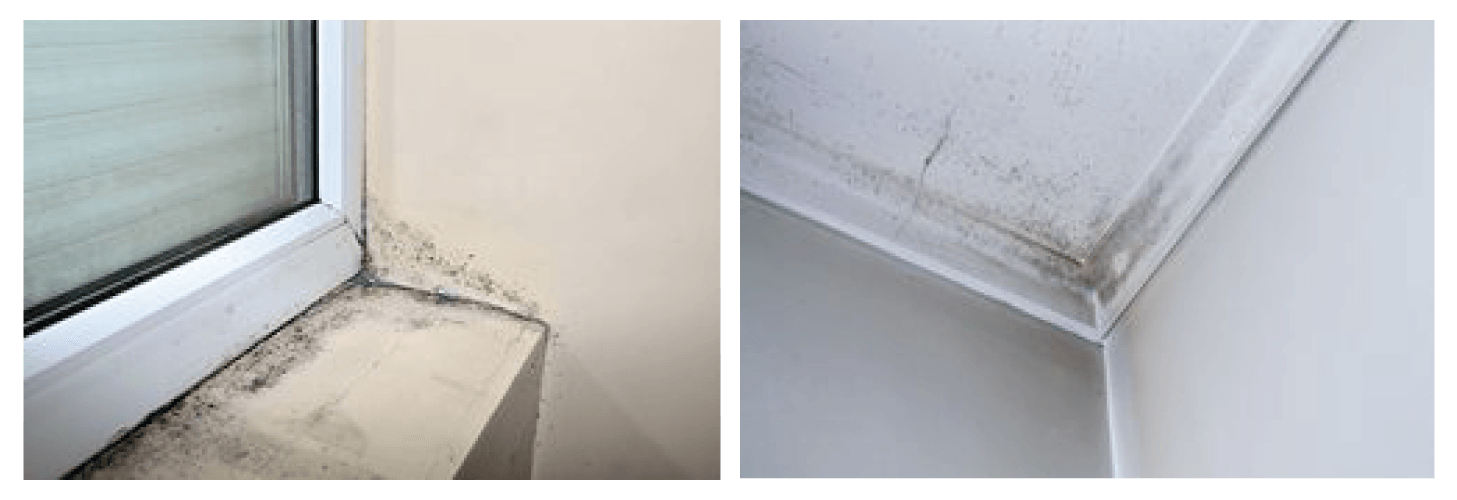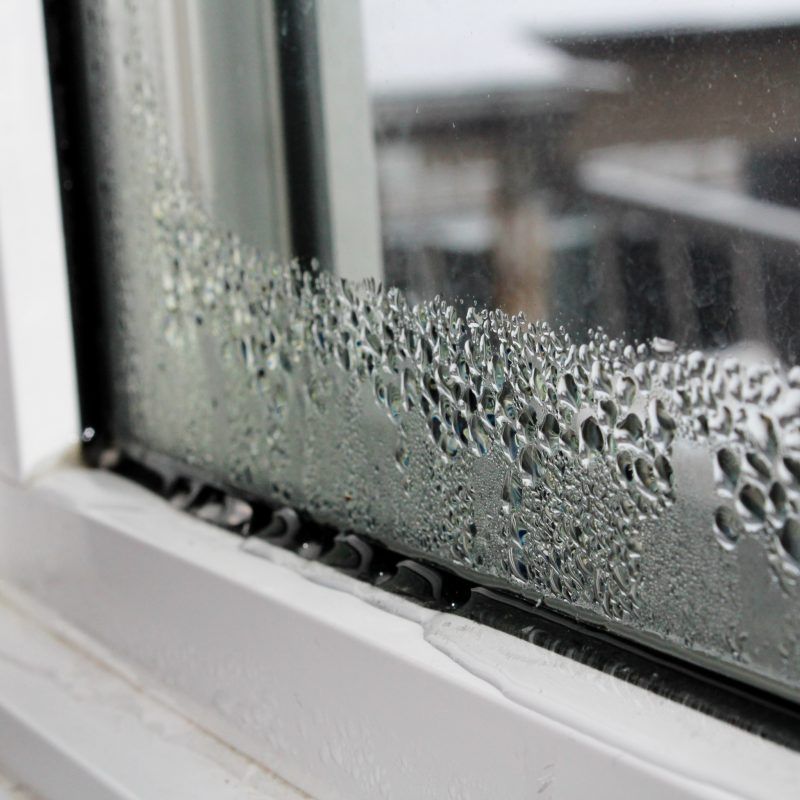Condensation
Condensation happens when warm damp air meets a cold surface, such as windows, mirrors or outside walls.
Condensation can cause black or green mould to form on walls and other surfaces and results in a large number of enquiries from our customers. Mould is often found in cooler rooms such as bedrooms, bathrooms and hallways. It can be found on window frames, outside walls, in cupboards and wardrobes or behind furniture.

The following information will help you get rid of mould and stop it growing back again.
Why does condensation happen?
Condensation happens when there is too much moisture in the air. Our everyday activities add extra moisture to the air inside our homes:
- 3 pints – 2 people at home for 16 hours
- 2 pints – Having a bath or shower
- 9 pints – Drying clothes indoors
- 6 pints – Cooking and use of a kettle
- 2 pints – Washing dishes
- 4 pints – Using a bottled gas heater (8 hours use)
More information about condensation and mould
-
How to kill and remove mould
-
Carefully remove excess mould with a damp cloth and throw away after. Or if possible use a vacuum cleaner and empty after. Do not brush mould as this releases spores into the air. Wipe down affected areas using a fungicidal wash or diluted bleach – remember always use rubber gloves and wear safety glasses.
Tea Tree oil is a natural antiseptic and disinfectant but it’s also great for cleaning especially on mould and mildew. Try a dilute of three to four drops of Tea Tree oil in two litres of water (hot or cold). Soak mildewed items in the solution or spray on to trouble spots using a test on a small area of the fabric/material /surface beforehand.
After treatment redecorate using a fungicidal paint or wall paper paste – do not paint over using ordinary paint. Dry clean mildewed clothes and shampoo carpets
-
Things to remember
-
- Do not completely block chimneys and flues
- Do not block ventilators or extractor fans
- Avoid putting furniture against cold external walls
Remember dealing with condensation is not easy. Only carrying out one or two of the steps may not solve the problem.
-
Other causes of mould
-
Mould is often caused by condensation but can also be caused by:
Rising Damp
This is caused by water rising from the ground into the home. It will only affect ground floor rooms. Black mould will rarely be seen where there is rising damp because the ground salts the damp carries with it prevents the growth of black mould.
Defective Plumbing
Leaks from water and waste pipes especially in bathrooms and kitchens can affect both external and internal walls and ceilings. Black mould will rarely be seen on this type of dampness because the area is usually too wet.
Penetrating Dampness
This type of dampness will only be found on external walls or in the case of roof leaks, on ceilings. It only appears because of a defect outside the home, such as missing pointing to the brickwork, cracked rendering or missing roof tiles.
Contact us if you are still having problems with condensation
If you have followed the advice above and are still having problems, please contact us.


